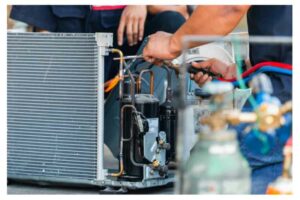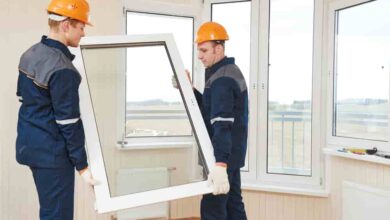How to Balance HVAC System?
Are you struggling with HVAC efficiency? Balancing your system’s airflow can improve room-to-room comfort, energy efficiency, and equipment longevity. But what if you’re in need of an upgrade? You might be wondering, How can I get a free HVAC system? While it’s a significant investment, there are sometimes promotions, rebates, or incentive programs offered by manufacturers or government entities aimed at encouraging energy-efficient home improvements. Keep an eye out for these opportunities, as they can drastically reduce costs or even offer free systems in some cases. In the meantime, measure airflow, adjust dampers for even distribution, and recheck to ensure a well-balanced system. This process eliminates temperature inconsistencies and cuts energy costs while extending your system’s life. Take charge and balance your HVAC for a more comfortable home and lower bills, and stay informed on ways to potentially upgrade your system for free.
What is Balancing?
When balancing your HVAC system, there are infrequent vital points to consider. First, there are two main types of balancing: air balancing and water balancing.

Air balancing involves adjusting airflow throughout the system to ensure proper distribution. Water balancing focuses on achieving the correct flow and pressure in the water-based components.
Both types ensure optimal performance and comfort in your HVAC system.
Read More:- What Does Your HVAC System Provide to Your Vehicle?
Types of Balancing
Static pressure balancing involves ensuring that the pressure within the system is evenly distributed, which can help improve performance and efficiency. This is particularly crucial when considering what a well-maintained HVAC system provide to your vehicle, where consistent temperature and air quality are paramount for a comfortable driving experience.
Airflow balancing, on the other hand, ensures that air is evenly distributed throughout your home or building, which can help maintain comfortable temperatures in every room. Just as in your living space, in your vehicle, proper airflow is essential for distributing cooled or heated air throughout the cabin, ensuring that all passengers enjoy a comfortable ride.
Addressing these two balancing aspects can ensure your HVAC system operates at its best, whether it’s installed in a residential building or providing climate control to your vehicle. By keeping these systems in check, you’re guaranteed to enjoy a comfortable and efficient environment wherever you are.
Static Pressure Balancing
To properly balance your HVAC system, you should prioritize static pressure balancing. This involves adjusting the airflow in your system to ensure that the pressure is evenly distributed throughout the ductwork. By doing so, you can optimize the performance of your HVAC system and ensure that each room receives the right amount of airflow.
Static pressure balancing requires measuring the static pressure at various points in the system and adjusting dampers or registers as needed. This process eliminates hot or cold spots in your home and ensures that your HVAC system operates efficiently. It can help prevent issues such as noisy ducts or excessive energy consumption.
By focusing on static pressure balancing, you can achieve a comfortable and energy-efficient environment in your home.
Airflow Balancing
Ensure you prioritize airflow balancing in your home to ensure every room receives the proper air and stays comfortable.
Airflow balancing involves adjusting the dampers in your HVAC system to regulate the air delivered to each room. Start by inspecting each room and assessing its airflow needs. You need to measure the airflow using a flow hood or an anemometer.
Once you have identified any imbalances, you can adjust the dampers accordingly. Opening dampers increase airflow while closing dampers decrease it. It’s important to note that airflow balancing is an iterative process, and you need to make multiple adjustments to achieve the desired airflow in each room.
Factors such as the room’s size, the number of occupants, and the location of supply and return vents should be considered when balancing the airflow.
Regularly monitor the airflow in each room and adjust as needed to maintain a comfortable and consistent airflow throughout your home.
Steps to Balance the HVAC System
To balance your HVAC system, there are several key steps you need to follow.

First, calculate each room’s design CFM (cubic feet per minute).
Then, determine the existing airflow in each room by measuring the air velocity and temperature.
Next, adjust the dampers to control the airflow to each room.
After that, measure the airflow using an anemometer and make any necessary adjustments.
Finally, make final adjustments to ensure that each room receives the correct airflow.
Calculate the Design of CFM
Figure out the ideal CFM for your HVAC system by calculating the Design CFM.
To calculate the Design CFM, consider the space size the HVAC system will be servicing.
Please measure the length, width, and height of the room or area and multiply them together to get the cubic footage.
Next, determine the number of air changes per hour (ACH) required for the space.
This will depend on factors such as the type of room and its occupancy.
Once you have the ACH, multiply it by the cubic footage and divide by 60 to get the CFM.
This calculation will give you the Design CFM, which is the amount of air that needs to be supplied or removed from the space to maintain the desired temperature and air quality.
Calculating the Design CFM can ensure your HVAC system is properly balanced and provides optimal comfort and efficiency.
Determine the Existing Airflow
Now that you’ve calculated the Design CFM for your HVAC system, you must determine the existing airflow. This step is crucial in achieving a balanced HVAC system.
You can identify discrepancies and adjust accordingly by measuring the airflow in each room. Start using an anemometer to measure the air velocity at each supply and return register. Then, multiply the rate by the register’s area to determine the airflow in cubic feet per minute (CFM).
Repeat this process for all the registers in your system. Once you have obtained the airflow measurements, compare them to the Design CFM you calculated earlier. Adjust the dampers or make other modifications to achieve a balanced HVAC system if there are significant variations.
Remember, a properly balanced system ensures optimal comfort and energy efficiency throughout your home or building.
Adjust the Dampers
Once you’ve determined the existing airflow, it’s time to tweak the dampers for optimal performance and comfort. Start by locating the dampers in your HVAC system, usually near the main trunk lines or ductwork. Depending on your system, these dampers can be adjusted manually or electronically.
Begin by opening all the dampers thoroughly and then gradually closing them one by one, starting with the rooms furthest from the HVAC unit. Monitor the airflow in each room to ensure a balanced distribution. If spaces still have too much or too little airflow, adjust the dampers accordingly until you achieve the desired balance.
Remember to make minor adjustments and give the system time to respond before making further changes. Adjusting the dampers correctly ensures that each room in your home receives the right air, resulting in improved comfort and energy efficiency.
Measure the Airflow
To ensure optimal performance and comfort, measuring the airflow in your home’s HVAC system is crucial. By measuring the airflow, you can determine if the system delivers the proper air to each room.
Start by locating the supply and return registers in each room. Use an anemometer to measure the airflow at each register, making sure to record the readings. This will help you identify any spaces receiving too little or too much air.
Adjust the dampers accordingly to balance the airflow throughout your home. Proper airflow is essential for maintaining a consistent temperature and maximizing energy efficiency.
So, take the time to measure and balance the airflow in your HVAC system for optimal performance and comfort.
Make Final Adjustments
Make those final adjustments to achieve the perfect balance of airflow throughout your home, maximizing comfort and energy efficiency.
Start by checking all the dampers in your HVAC system and adjusting them to regulate the airflow in each room. Changing the registers in each room can also help fine-tune the airflow.
Pay close attention to any rooms that are too warm or cold and adjust accordingly. Check the thermostat settings to ensure they’re properly calibrated and set according to your desired temperature.
Finally, don’t forget to clean or replace air filters, as dirty filters can restrict airflow.
These final steps will ensure that your HVAC system is properly balanced, providing optimal comfort and energy efficiency for your home.
Read More:- How Much is a New HVAC System?
Benefits of Balancing
When it comes to balancing your HVAC system, there are two key benefits you should know about.

First, balancing your system can significantly improve your comfort levels throughout your home. By ensuring a consistent and even air distribution, you can eliminate hot or cold spots and enjoy a more comfortable living environment.
Balancing your HVAC system can help reduce energy costs by optimizing its efficiency and preventing wasted energy.
So, take the time to balance your system and start reaping the benefits today.
Read More:- How Much is a New HVAC System?
Improved Comfort
Achieving improved comfort in your HVAC system is like stepping into a cozy oasis where warmth hugs you and cool air gently caresses your skin.
When your HVAC system is balanced correctly, each room in your home receives the proper airflow, ensuring consistent temperatures throughout. You will no longer have to endure hot spots or cold drafts, as the air will be distributed evenly.
Say goodbye to uncomfortable nights spent tossing and turning, trying to find the perfect blanket combination. A balanced HVAC system lets you enjoy a peaceful night’s sleep, free from temperature fluctuations. This enhances your comfort and lets you relax and unwind fully in your home.
So, why settle for anything less than optimal comfort? Take the necessary steps to balance your HVAC system and create a haven of comfort in your living space.
Reduced Energy Costs
Optimize the efficiency of your heating and cooling system to save money on your energy bills. Balancing your HVAC system can also help reduce energy costs by ensuring that each room receives the proper airflow and temperature.
By adjusting the dampers and registers, you can redirect air to the areas that need it most, preventing wasted energy and reducing the workload on your HVAC system. Regular maintenance, such as cleaning or replacing air filters, can improve airflow and prevent your system from overworking.
Another way to save energy and reduce costs is to use programmable thermostats, which automatically adjust the temperature when you’re away or asleep. By implementing these energy-saving strategies, you can enjoy a comfortable home while keeping your energy bills in check.
Conclusion
In conclusion, balancing your HVAC system improves performance, comfort, and energy efficiency. Clean components, adjust airflow and maintain regularly for optimal function. This prevents temperature inconsistencies, extends equipment life, and saves energy costs. Balance your system for a consistently comfortable home and lower bills.



